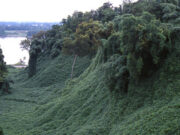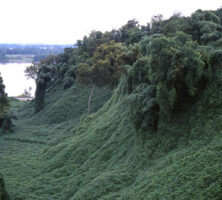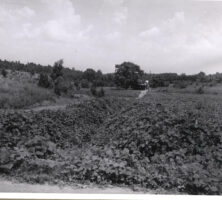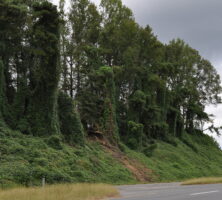Kudzu (Pueraria lobata; formerly P. thunbergiana) is a prolific vine that was introduced to Georgia and other southern states during the latter half of the nineteenth century. In the decades that followed, the plant’s coverage expanded dramatically, consuming fields and forests throughout the region, while becoming a cultural touchstone for generations of southerners.
Cultivated in Japan for centuries, kudzu first appeared in the United States in 1876 at the Philadelphia Centennial Exposition’s Japanese Pavilion. It was introduced to southerners at the New Orleans (Louisiana) Exposition in 1884-86. Because of its luxuriant and rapid growth, broad and layered leaves, and wisteria-like purple or magenta flowers, it soon gained popularity as a shade plant and became known as the “porch vine.”
By the early 1930s some agricultural experts had come to believe in the virtues of protein-rich kudzu as a forage plant that could be grown on poor soils and began to advocate its production to farmers. In 1930-31, during the Great Depression, Georgia experienced the worst drought in its history. The condition of the state’s soil, already depleted by poor agricultural practices, worsened. In 1935 the newly formed Soil Conservation Service decided to tout kudzu for erosion control and began producing seedlings at nurseries in Virginia, North Carolina, Alabama, and Georgia. Between 1935 and 1942 these nurseries grew a hundred million kudzu seedlings that were then shipped throughout the Southeast and distributed to farmers, who used the vine on rilled and gullied croplands, and to railroads and highway departments that planted the seedlings along exposed rights-of-way.
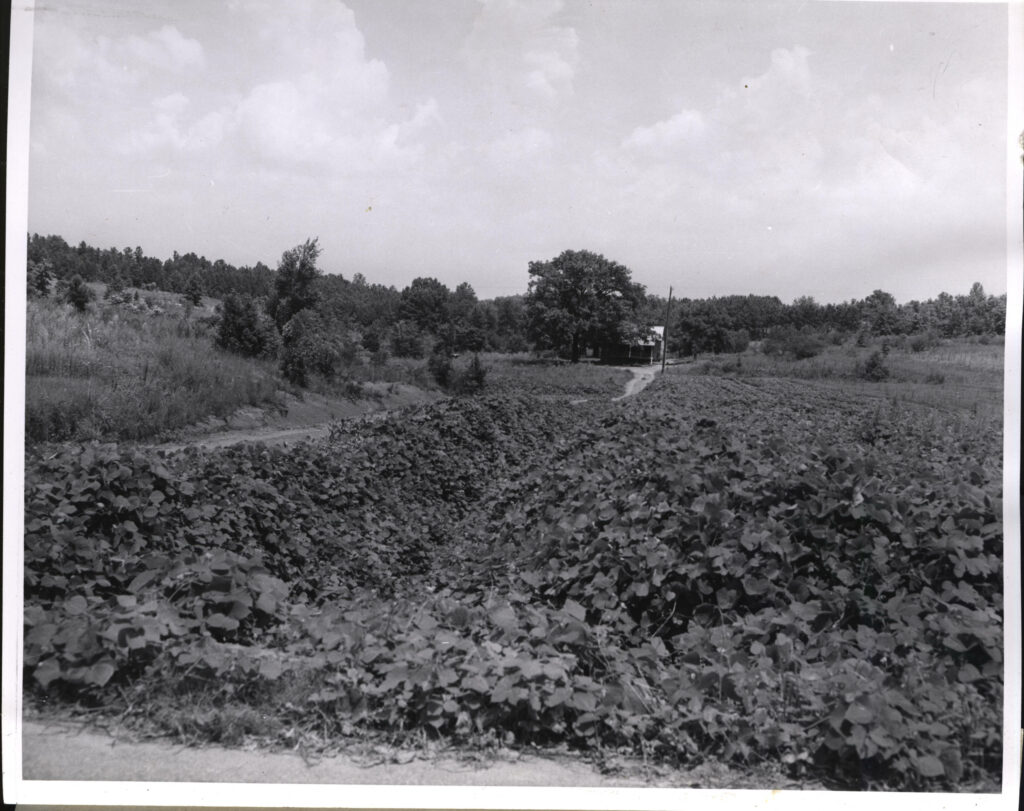
By the mid-1940s kudzu had gained other champions. Channing Cope, a columnist for the Atlanta Constitution, grew kudzu for forage on his Yellow River farm southeast of Atlanta. Cope organized the Kudzu Club of America, whose members planted the vine wherever they could. Both the Soil Conservation Service and the Kudzu Club were wildly successful. By 1945 about a half million acres in the South were planted in kudzu.
But the virtue that the vine’s promoters praised most highly—its vigor and rapid rate of growth—soon revealed itself a virtue in excess. By the 1950s foresters and highway engineers were complaining that wherever it was planted, the vine grew upward or outward, often at rates of sixty to a hundred feet a season. It engulfed pine trees and established dense mats several feet thick along the sunny sides of roads. Both farmers and urban gardeners living adjacent to naturalized banks or empty lots cursed the vine’s invasiveness. The U.S. Department of Agriculture removed kudzu from its list of acceptable cover crops for its Agricultural Conservation Program in the 1950s, and in 1972 it demoted the plant to weed status. By 1993 a study by the Congressional Office of Technology Assessment claimed that kudzu accounted for about $50 million annually in lost farm and timber production.
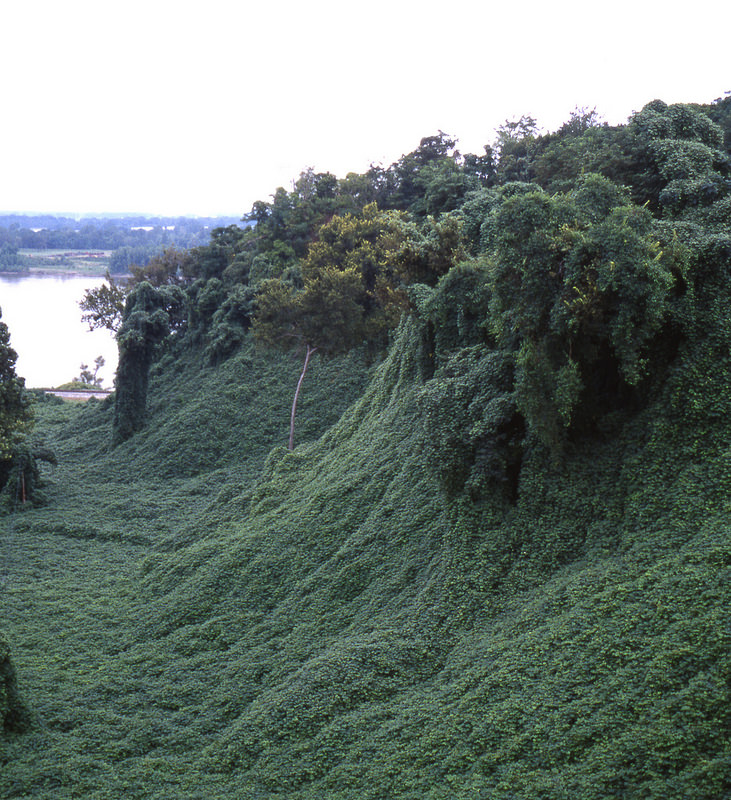
Photograph by NatureServe

In recent years, however, southerners have slowed the crop’s advance and, remarkably, even reclaimed land once thought permanently lost to the “mile-a-minute vine.” With help from goats, herbicides, and Megacopta cribraria, a kudzu-eating insect of Asian origin, foresters and landowners have slowly won the perennial battle with kudzu, such that the species, which once claimed millions of acres regionwide, covered only 227,000 acres of southern forests in 2010, according to the U.S. Forest Service. Precise numbers for kudzu’s metropolitan coverage are harder to come by, but experts estimate that kudzu covers another 500,000 acres in the South’s cities and suburbs.
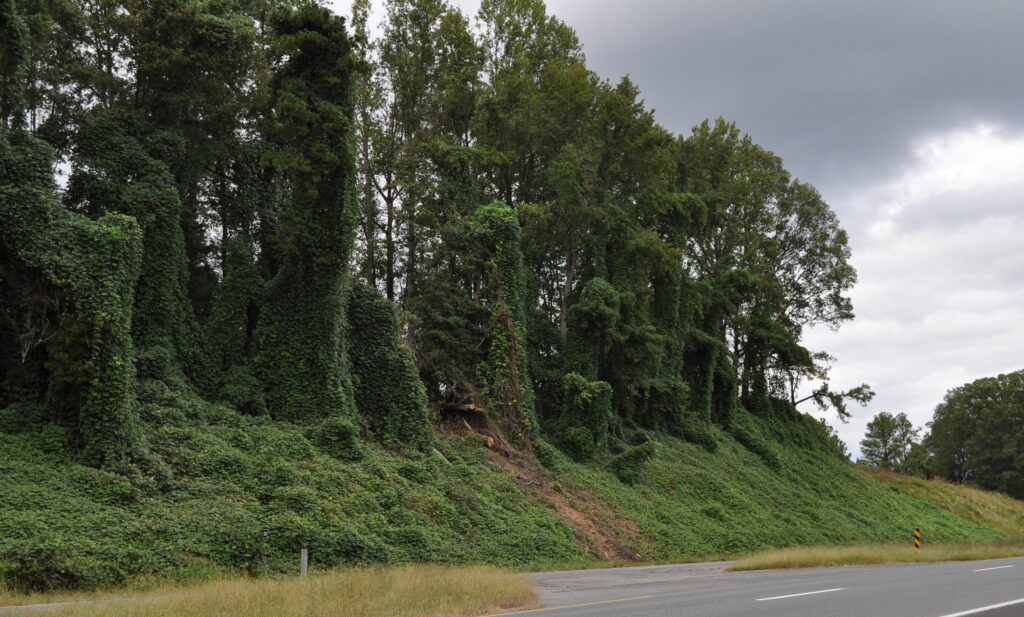
But while kudzu may be in retreat across the southern landscape, it maintains a stubborn persistence in the region’s life and literature. For better or worse, southern novelists still cling to the vine when describing the region’s environmental condition, and writers such as Willie Morris and James Dickey have both given voice to the familiar fear that kudzu might someday consume the South whole. Kudzu-branded shops and stores remain in evidence as well, suggesting that the Japanese import will retain its prominence in the region’s culture, if not in its fields, for many years to come.


